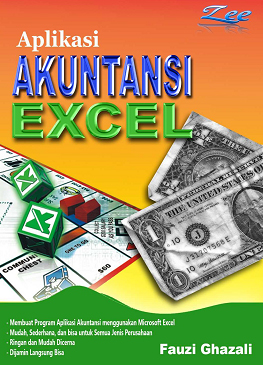Manajemen Keuangan Lanjutan Ppt Pdf Download

SILABI MANAJEMEN KEUANGAN LANJUTAN MATERI DAN SUB MATERI LEVEL 1. Pengelolaan dan strategi nilai perusahaan 1.1 Penciptaan dan penurunan nilai perusahaan. 1.2 Tujuan perusahaan untuk memaksimalkan kekayaan pemegang saham. 1.3 Tiga langkah dalam meningkatkan nilai perusahaan. 1.4 Manajemen berbasis laba. Copyright: © All Rights Reserved Download as PPTX, PDF, TXT or read online from Scribd as PPTX, PDF, TXT or read online from Scribd.
• Sistem Pengendalian Persediaan dan Produksi JIT: >> Membeli BB dan memproduksi unit output sesuai dengan permintaan aktual dari pelanggan >> Persediaan dikurangi sampai pada tingkat minimum (bahkan sampai titik nol) • Dampak JIT (perush. Manufaktur): >> Efisiensi dan mengurangi biaya (penyimpanan dan pemesanan) serta meningkatkan efisiensi dan efektifitas operasi. Bahan bahan baku yang diterima segera masuk ke proses produksi, bahan produksi lainnya segera digabungkan dan dikerjakan, dan produk yang telah jadi segera dikirimkan kepada pelanggan. Meliputi desain ulang secara menyeluruh proses bisnis dalam rangka menghilangkan aktivitas yang tidak bernilai tambah dan mengurangi kemungkinan terjadinya kesalahan.
Rekayasa ulang mengandalkan pada spesialis dari luar perusahaan. >> Merupakan pendekatan yang lebih radikal dibandingkan TQM >> Sebagai ganti perbaikan sistem yang dirancang serial dan bertahap. >> Dalam PR suatu proses bisnis diplot dalam sebuah diagram secara detail, dikritik dan kemudian dirancang ulang untuk menghilangkan langkah-langkah yang tidak diperlukan, mengurangi kemungkinan terjadinya kesalahan dan mengurangi biaya. Proses bisnis adalah serangkaian tahapan yang harus dilakukan untuk menjalankan tugas-tugas dalam dalam suatu bisnis. An Example: Assume that design engineers have been told that the number of parts is a significant cost driver and that reducing the number of parts will reduce the demand for various activities downstream in the value chain.
They plan to reduce the price by per-unit savings. Currently 10,000 units are produced. The data of the new design and its effects on demand are given below: Current Expected Activity Cost Driver Capacity Demand Demand Material usage # of parts 200,000 200,000 80,000 Labor usage Labor hours 10,000 10,000 5,000 Purchasing # of orders 15,000 12,500 6,500 Warranty repair # of defects 1,000 800 500. An Example: Suppose that the Thompson Company produces precision parts for 11 major buyers. An activity-based costing system is used to assign manufacturing costs to products.
The company prices each customer's order by adding order-filling costs to manufacturing costs and then adding a 20% markup (to cover any administrative costs plus profits). Order-filling costs total $606,000 and are currently assigned in proportion to sales volume (measured by number of parts sold). Of the 11 customers, one accounts for 50% of sales, with the remaining ten accounting for the remainder of sales.
Orders placed by the smaller companies are also about the same size. Data concerning Thompson’s customer activity are given on PPT 13-22.
Units purchased 500,000 500,000 Orders placed 2 200 Manufacturing costs $3,000,000 $3,000,000 *Orders-filling costs 6,000 600,000 Order cost per unit $.012 $1.20 *Order-filling capacity is allocated using number of orders. The allocation rate is $3,000 pre order ($606,000/202 orders).
Autopagex plug in keygen windows 10. Download keygen for EverMap Plugins Suite for Adobe Acrobat Professional XI and X. - Adobe Acrobat AutoMassSecure Plug-in 1.0 - Adobe Acrobat AutoPagex Plug-in 1.9.
Assume that ordering costs are allocated using a new driver: Implications: By using a new driver, we are drastically reducing the ordering-cost per unit of the high volume customer (50% of our business). This information could assist Thompson in establishing a new strategy for pricing. Suppose that engineers are considering two new product designs for one of its power tools.
Both designs reduce direct materials and direct labor content over the current model. The anticipated effects of the two designs on manufacturing, logistical, and postpurchase activities costs are listed below: Cost Behavior Functional-based system: Variable conversion activity rate: $40 per direct labor hour Material usage rate: $8 per part ABC system: Labor usage $10 per direct labor hour Material usage: $8 per part Machining: $28 per machine hour Purchasing activity: $60 per purchase order Setup activity: $1,00 per setup hour Warranty activity: $200 per returned unit Customer repair cost: $10 per hour. TDABC computes the cost per minute of the resources performing the work activity. Assume 2 clerical workers paid $45,000 annually perform a certain activity that is expected to require 17 minutes. TDABC calculates the total cost as $45,000 x 2 = $90,000; TDABC then calculates the total time available for the activity as 180,000 minutes (assuming 30 hours per week with two weeks vacation: 2 workers x 50 weeks x 30 hours x 60 minutes per hour = 180,000 minutes per year). The TDAC rate for the activity is $0.50 per minute ($90,000 / 180,000).The cost of a unit of activity is $0.50 x 17 min = $8.50; if the activity required 20 min, then the allocation would be $.50 x 20 = $10.